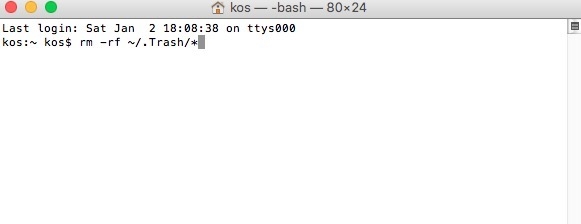

- MAC TERMINAL COMMANDS FORCE OPEN HOW TO
- MAC TERMINAL COMMANDS FORCE OPEN INSTALL
- MAC TERMINAL COMMANDS FORCE OPEN FULL
- MAC TERMINAL COMMANDS FORCE OPEN SOFTWARE
Select the checkbox next to the one endpoint.In the Endpoints panel, do either of the following to display information about an endpoint:.

MAC TERMINAL COMMANDS FORCE OPEN INSTALL
It’s a great resource to find and install Apple Silicon versions of your apps.From the Management Portal, you can issue commands to individual endpoints or to a group of endpoints. You can visit the website “ Does it ARM?”or Is Apple silicon ready? and search for any app. Sometimes, a fully ARM native version is not available, but an ARM optimized beta version is. This means that Rosetta will run in the background to translate the application and make it compatible to run on the M1, but this also means that it will not run in its fully ARM optimized glory.īefore you install the rest of your applications, I recommend checking if they offer native support for Apple Silicon. So we have to install the x86_64 versions of these applications.
MAC TERMINAL COMMANDS FORCE OPEN FULL
Right now, there are still a few applications that don't offer full native support for Apple Silicon. Finding and installing native applications

I recommend using the "Rosetta-Terminal" for installing the rest of your command line tools and using the Native Terminal for your daily workflow. Create a Rosetta Terminalįirst, duplicate the Terminal and rename it.Then,Open Finder and navigate to the Application/Utilities folder and select "Duplicate."Īs you can see, nvm, npm and node.js version 12.x have all been successfully translated and installed on Apple Silicon. Using this "Rosetta" terminal makes it a breeze to install our preferred tools.
MAC TERMINAL COMMANDS FORCE OPEN HOW TO
I’ll explain how to duplicate the macOS native terminal and force the duplicated terminal to always run with Rosetta 2. Thankfully, with Apple's translation layer Rosetta 2, we can easily download and compile applications that were built for x86_64 and run them on Apple Silicon. However, several critical CLI tools like `nvm` and `brew` do not have native versions built for the new M1 architecture, so installing them on your native terminal can be frustrating. Rosetta vs Native TerminalĬommand line tools are crucial for our day-to-day workflows. To help you take full advantage of the power of the new MacBooks, here are some tips and tricks I picked up when setting up my own machine. This task was more complicated than usual because, with the new MacBooks, Apple has replaced their long-running Intel processors with their own M1 chip.
MAC TERMINAL COMMANDS FORCE OPEN SOFTWARE
I recently joined Courier as a Software Engineer and part of the onboarding process was to set up and configure my development environment on the new M1 MacBook Pro.


 0 kommentar(er)
0 kommentar(er)
